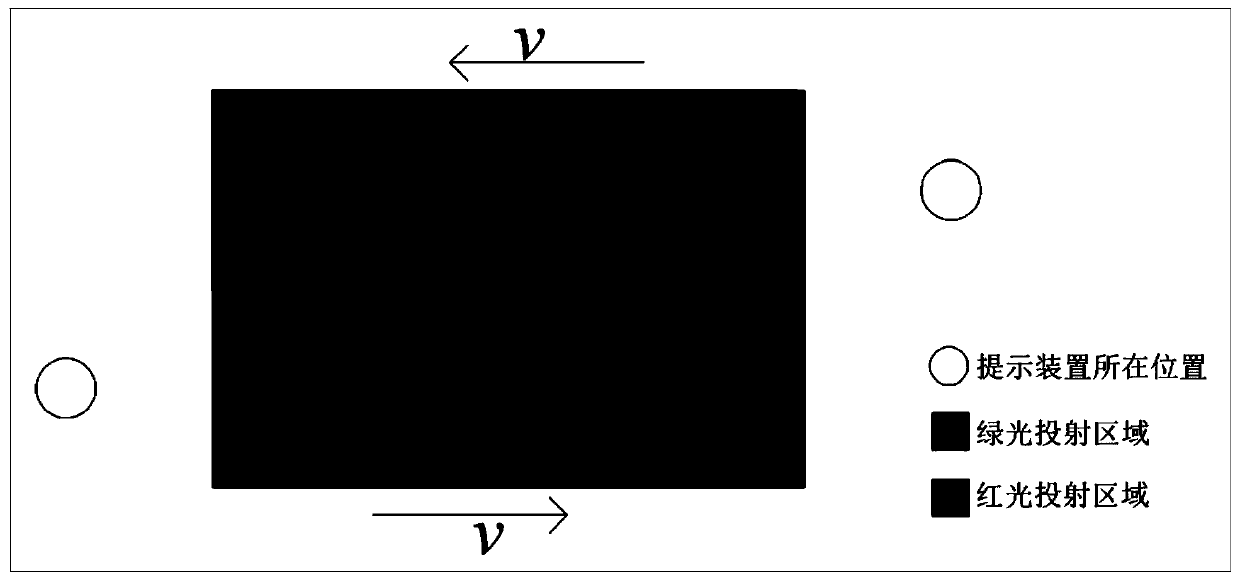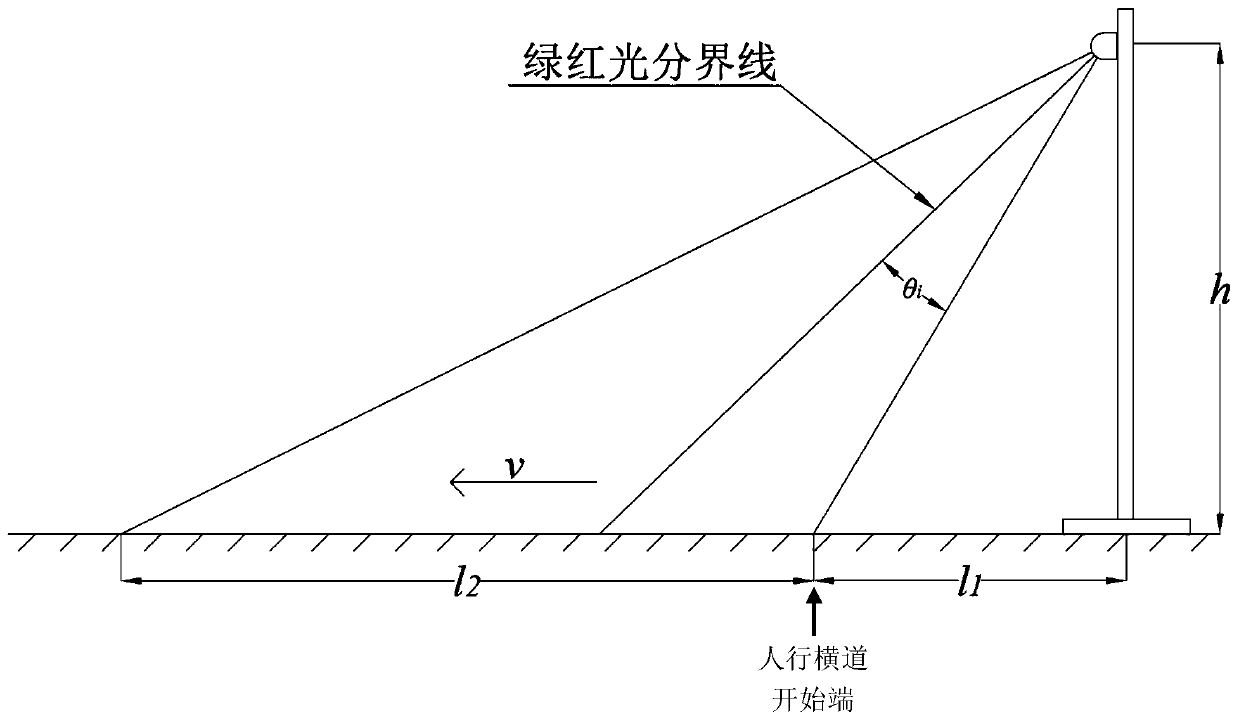Auxiliary prompting method for street crossing at end of pedestrian traffic signal
A traffic signal and pedestrian technology, applied in the field of traffic engineering, can solve traffic conflicts and other problems, achieve the effect of avoiding safety hazards and overcoming traffic conflicts
- Summary
- Abstract
- Description
- Claims
- Application Information
AI Technical Summary
Benefits of technology
Problems solved by technology
Method used
Image
Examples
specific Embodiment approach 1
[0015] Specific implementation mode 1: A pedestrian crossing assistance prompt method at the end of the traffic signal described in this implementation mode, the method is specifically:
[0016] When the pedestrian traffic signal green light is turned on, the prompt device located on the pedestrian traffic signal light pole projects a green light strip on the crosswalk, which means that pedestrians are allowed to enter the crosswalk at this time; it also emphasizes that pedestrians have priority when crossing the street, and pedestrians must be polite when turning to motor vehicles;
[0017] At the end of the pedestrian traffic signal green light, the prompting device changes the projected green light strips from both ends of the crosswalk to red light strips at a speed of v. When pedestrians who have not entered the crosswalk see the green light strips at both ends of the crosswalk change to red light strips, Judging that pedestrians are not allowed to enter the crosswalk at this
specific Embodiment approach 2
[0024] Specific embodiment two: the difference between this embodiment and specific embodiment one is: the start time of the next motor vehicle phase of the pedestrian traffic signal is t 2 , then the prompting device starts from time t 1 To start, change the green light strips projected at both ends of the crosswalk to red light strips;
[0025]
[0026] Among them: l 2 Represents the length of the pedestrian crossing in meters, and v represents the average pace of pedestrians in meters per second.
specific Embodiment approach 3
[0027] Specific implementation mode three: the difference between this implementation mode and specific implementation mode two is: the time t 1 with t 2 any time between t i , at time t i The rotation angle θ of the light source in the reminder device i for:
[0028]
[0029] Among them: l 1 Represents the vertical distance between the prompting device and the beginning of the crosswalk, in meters, and h represents the height of the prompting device from the ground, in meters.
PUM
 Login to view more
Login to view more Abstract
Description
Claims
Application Information
 Login to view more
Login to view more - R&D Engineer
- R&D Manager
- IP Professional
- Industry Leading Data Capabilities
- Powerful AI technology
- Patent DNA Extraction
Browse by: Latest US Patents, China's latest patents, Technical Efficacy Thesaurus, Application Domain, Technology Topic.
© 2024 PatSnap. All rights reserved.Legal|Privacy policy|Modern Slavery Act Transparency Statement|Sitemap



